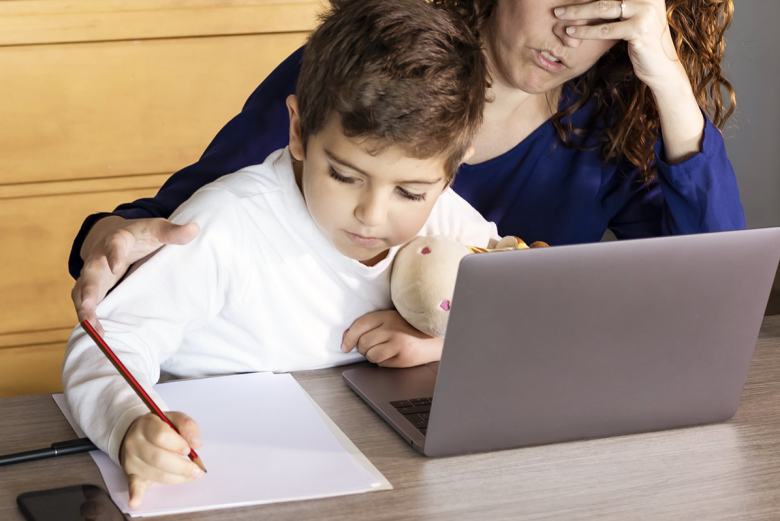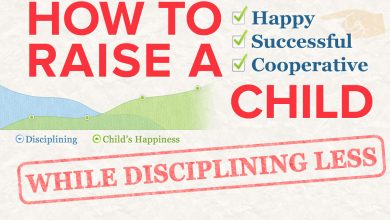
Giving you a break is not your kids’ responsibility. So how do you give one to yourself?
Covid up-ended the lifestyles of families with children at home. We all got through that initial shock the best we could. Now, with some perspective, it’s important to consider how to create a harmonious family in the midst of any big shift.
In this episode, Carol is joined by Anne and special guest Jennifer to share great tips they learned with kids at home full-time—and how to give themselves a break!
This episode’s Parenting Practice
Look at your family’s lifestyle and consciously choose to create more harmony in it. This might be as simple as scheduling a break for yourself, or your children from each other. Accept what is right now, and then ask yourself: What one thing can I do to allow more harmony in my family?
Transcript of podcast episode
Carol: Welcome to The Child Whisperer Podcast. I’m your host, Carol Tuttle, author of the bestselling parenting book The Child Whisperer. I’m with my co-host, Anne Tuttle Brown. As you’re spending more time together as a family, and you’ve had to adapt to new learning experiences and even responsibility over your child’s education, it’s really important to consider what changes you need to make.
You’ve probably learned a lot of those already. Here are some great tips we’re going to talk about today about creating a harmonious family lifestyle in the midst of some big shifts in our life. Both my daughters are joining me today, as they’ve both been through this with children at home. My life doesn’t get altered too much, you know, because I don’t have anyone staying home. I’m used to having my husband around a lot, but you’ve definitely been through a lot of phases through all of this. And you’ve had some great takeaways and you’re going to share a lot of tips on how to create that harmony on a continual basis and things may change again. So, it’s about being able to shift and make the best of things right now. So, thanks to both Anne and Jennifer, my two daughters that are going to give us some tips from the field.
Jennifer: I love that, Mom. It was a big, big change to start when everybody else had their kids home full-time when school shut down, I cried real tears for all the mothers. Because I knew what a change it would be and what a trial. Liken unto childbirth, I felt there were a lot of labor pains in making that transition and kind of birthing a new family culture.
Carol: That’s a great analogy.
Jennifer: A new life kind of style in the way of going about things. And it went from me just waking up, getting the kids ready, getting them off to school, and taking care of, you know, things that I need to take care of during the day and then supporting them in the afternoons, to waking up and having them there for all three meals and snacks and all school responsibilities primarily, you know, on my shoulders.
And so, it was a huge, giant change. And I think, like Anne, with your experience you can chime in now tell us what it was like with the change from when your kids were at school to all of a sudden being home. How was that like for you when school shut down?
Anne: When Katie was the first one from school, I mean, that really had been the most time she’d ever spent around her brothers. Because even when Sam and Katie are four years apart, and even when he was born, she was in preschool three days a week. And then just even with summers, like usually summer there’s activities going on, like there was nothing. The first two weeks were a little bit of a well, a lot of like bombs going off, just like kind of working out, being together that much, you know.
But it’s been a great opportunity and I feel like after five months at the time of this recording, you know, we’re headed back to school, but it’s like, oh, we’re getting into some rhythms and routines just because out of necessity, like we need that. And so, a lot of good has come out of it.
And actually, I saw an experience shared on the Child Whisperer page that there were two sons that did not get along. And the mom was really nervous when school shut down that they were going to be spending more time together. And she said you know what? They’re getting along better than ever before. And I think it was just great, yeah, to see like, you know, there might be some kinks to work out, but you know, we’re a family we’re going to be together, we got to work it out. So, what was it like for you, Jenny, when you started homeschooling and you didn’t send your kids off on the bus and you’re like, “Wait, you’re still here?” Imagine.
Jennifer: Yeah. Well, one thing definitely like you said, Anne, we want to get back to schedule routine. We want to get these good things that we have in our communities and for our kids going again, you know? But one thing that I learned when my kids were home full time was that we need to work… we need to learn how to get along because we are together full-time. And so, it does provide an opportunity for us to be more patient with each other and have more fun together and even be more creative on how we take time away from each other.
Carol: You learned what supports you and what doesn’t support you where you were, I think, neglecting that and putting all of their needs first, and then you weren’t happy and you were stressed and you realized, “Wait a minute, I got to do what’s going to support me as a priority so that I’m in a good place to support them.”
Jennifer: Yes. That’s right. Going with the theme of the podcast, which is Take a Break Before You Break, I learned how important it is to take care of me so I would have something to give back to them. And so, I’ve become better at taking care of myself than I ever have just out of sheer need and necessity for me to be happy and so that I can be in a place where I can give to my kids and be a happy mom for them and for my…yeah.
Carol: I think one of the first steps in any situation that we aren’t favoring where we go, I don’t want this, but there’s no ability to…you know, it is what it is. You’re dealing with something that you don’t want to have to deal with, but that won’t change it.
So, that ability to accept it, accept what is. That doesn’t mean you agree with it or you think it’s wonderful. It’s an acceptance. Because in that acceptance, you’re now able to make choices within the environment and what’s playing out. In this case, it’s you may not have the opportunity to send your children back to school, to some of the parents listening to this.
Anne: Or even if you are, maybe, you know, there’s some districts in Utah that are doing every other day, our school’s been shortened…
Carol: Or your children have to wear a mask. And that’s pretty much okay.
Anne: Yeah. And I mean, if there’s an outbreak at the school, the school all goes online.
Carol: Right. You don’t know where it’s going to go.
Anne: Yes.
Carol: It may change on a dime, and you may all be back together again. And so, you just, again, you might have this cycle of the…grief cycle is playing out over and over and over in our lives, which is, you know, anger, sadness, acceptance finally. And so, allow yourself those emotions, but don’t get stuck in them. Don’t get stuck in any particular…. once you get to acceptance, you’re able to know now, okay, how do we do this with the best outcome for everyone?
Anne: Before we go on, we have a brief message you’re going to want to hear.
Knowing your type and your child’s type changes everything, doesn’t it? It helps you to understand one another better. It can help your outside too. When you wear clothes that express your Type, you feel better, you look better and people understand you more easily, including your kids. Carol Tuttle created the Dressing Your Truth program to help you dress true to your type and create a personal style that expresses who you really are. The best part: you can learn all the basics for free. Start loving how you look and feel at dressingyourtruth.com.
Anne: Jenny, when we were talking the other day, you said something that, you know, made me think. It was, “My kids are not a burden. They’re a delight, just making that switch.” And it’s kind of silly to think about. Because you don’t want to be like, well, of course, my kids are not a burden but definitely in some scenarios, they are. I think every parent’s been there, but how have you as you’ve you know, embarked on your first year of homeschool and harboring everyone at home made that switch and experience more joy with your kids around?
Jennifer: Yeah. I love how you said that. Experiencing more joy with your kids around because with our kids being in school, we have that time to do things that we need to do that are a lot trickier to do with the kids around.
Carol: You get a break from your children.
Jennifer: You get a break, yeah. That’s right. It’s that’s break. And so, when they’re there, it’s like, they feel like a burden because it’s much harder to get those things done.
Carol: And you just need a break from just being interactive with them.
Anne: The noise and the energy. Yeah.
Carol: And the demands they just naturally put on you because of the parent/child relationship. You need a break from all of that.
Jennifer: That’s right. And I think, like, so how do you manage that? How do you go from feeling like they’re a constant interruption to you to managing you’re the priority right now and this is you…I’m going to give you my time and attention and the way I’ve been able to do that is just communicate with my kids: “It’s Mommy’s work time now.”
And so, having times where, if we’re in school mode, I’m in school mode and they’re not an interruption to me and they’re not a burden to me because this is what I’ve decided to do. I’ve decided to do their schooling and so that’s going to be our focus. And then there’s certain time in the day in the afternoon when they’re doing their independent, like, free time or reading or whatnot. And then I’m able to do my work and I can tell them now I’m doing my work and I can have that time. And so, that’s helped me balance, you know.
Carol: Put it in your schedule and call it family break time. Okay. We all need a break from each other. You really incorporate that.
Anne: Actually I have this experience once like bedtimes creeping around because I’m like, “I’m done with you. Like it was bedtime. And you’re up later than I wanted. Because like maybe the scheduling… And so, actually, I saw a funny meme that was like, “I don’t put you to bed because you’re tired. I put you to bed because I’m tired.”
Carol: Yeah. That’s true.
Anne: But last night I was…
Carol: That’s why we get into these habits of staying up later than we want to and sacrificing some sleep so we have alone time and we get a break. I did that a lot as a mom.
Anne: So, last night, you know, I had said goodnight to Katie, but she didn’t need to go to bed for another 30 minutes. And she’s like, “Mom, come inside I want to do girl time.” And I was outside working in the yard and I was just like, kind of feeling badly, oh, I should spend…and I was like, “Katie, actually, we’re not going to do that tonight because I’m doing my thing now.” And she was just like, “Okay.” And I said, “We’ll have time to do that tomorrow or something.” But it was just like, I can have my own time right now even if she’s…
Carol: Yeah. It’s fine. You know, I want to do my own thing and you’ll need to do your own thing. And let me know what that is like.
Anne: And like you said, Jenny, coming off of a time where you’ve dedicated yourself to, you know, to them and it’s us time, you can a lot more easily then separate it and say…and this kind of goes to another tip is the quiet time and time apart and like really setting that up.
Carol: Well, and it’s with two parents in the home, you can, you know, set that up with each other to say, hey, even if it’s not you leaving the home, they’re in charge and don’t bug mom right now. You know, it’s her time. So, you can create blocks of time for both parents to have independent and a break time and give that to each other.
Anne: And a time for the kids to be apart from each other too, to give everybody some space.
Jennifer: And then the time together is delightful, right, or at least that’s what you’re working for, right? And then the next work time I know.
Carol: It’s better. From better to delightful. You can have a scale there. You don’t have to hit one. Don’t put that expectation on yourself. Well, anytime you feel your kid…I think you both made a really good point, you’re wanting them to go to bed not because you want them to go to bed, you want the time.
Children don’t give you breaks unless you put that in place.
You’ve got to know that. So, don’t get mad at them for being too much when they feel too much. Don’t get upset at them if you’re not taking care of yourself and creating breaks because somehow they should know you need one. It’s not their responsibility.
And yet they get the frustration projected back onto them quite often because what you really need you’re not giving yourself and you’re kind of frustrated and tired of them and they’re getting the brunt of that.
Anne: And I think as a mom taking that break before you break is so important that you are taking care of yourself and make the most of that time. Like, what are you doing in that time rather than like being halfway there with your kids and like checking your phone or emails. Like I’ve definitely been there.
Carol: Yeah. You’re trying to give yourself a break but not really.
Anne: …while you’re not really at break. So, like, you know, if you set that up, then you know, what Type are you…what nourishment do you need? Is it a social outlet? Is it getting on your social media and connecting, but really being present there and being uninterrupted? Is it taking a quick nap? Is it, you know, going out in the yard? Whatever, like look at what really nourishes you and what can you do and make the most of that time.
Because it can…like Jenny, you gave this example when we were talking, it’s like nursing a baby, you’ve got to be nourished to nurse the baby. And then you can both be fed.
Carol: Yeah. That’s a great analogy as well. This week’s parenting practice is an opportunity to look at creating more harmony in your family lifestyle. It may be as simple as you need to give yourself a break, so you’re more centered and available and stable in your mood, so you can support your children with more enthusiasm.
And show them, you know, I’ve shared in other mediums that the side effects and the different lifestyle changes within this experience of pandemic may not be as traumatizing as how you’re reacting to it, to your children, by your own stress, your own frustration, maybe it’s anger, maybe it’s worry. And that could be more of a burden and more stressful to your children than the situation at hand.
So, accept what is, is the first step. And then what one thing can you do to make that shift to allow more harmony? The thing is, harmony is available. It’s not like you create harmony, you remove what disrupts it and harmony comes in. So, you’ve got to address the disruptions and remove them, and then harmony is the case, the environment you’ll be in.
Thanks for listening. For more support go to thechildwhisperer.com, where you can purchase the book, subscribe to our weekly parenting practice email, and find a transcription and audio of The Child Whisperer Podcast.
– If you’re listening on iTunes, thank you for leaving a review. If you have a parenting question, please send it to [email protected].



